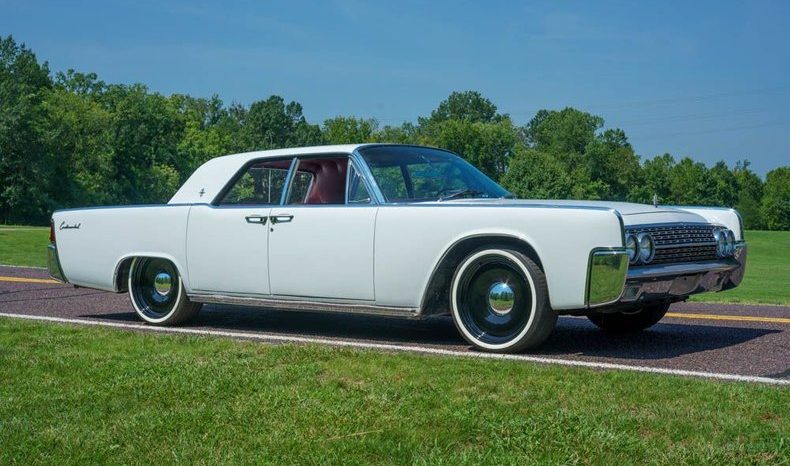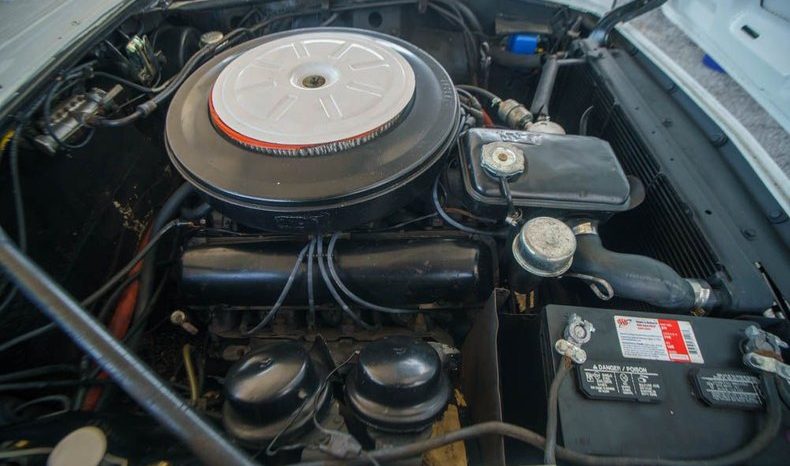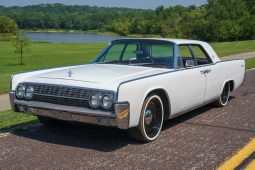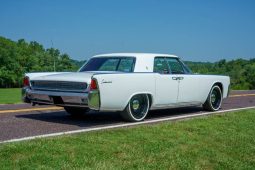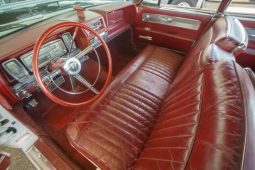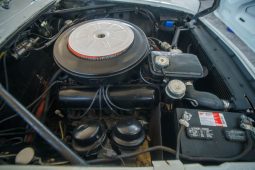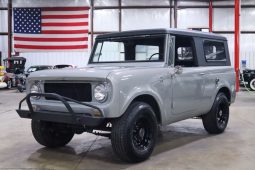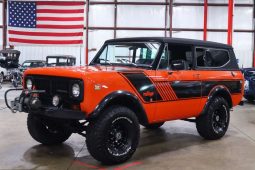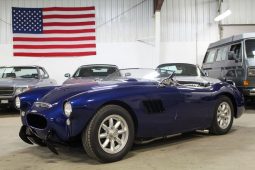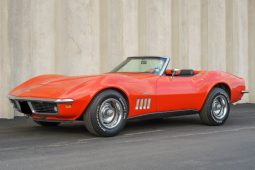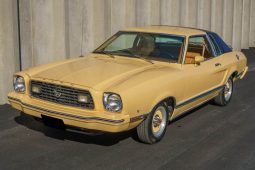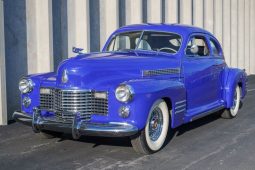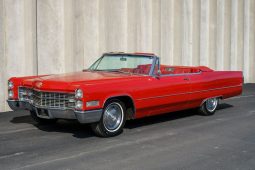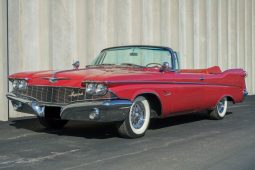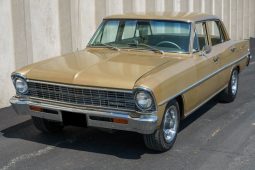This Lincoln rolls on 20-inch Mobsteel Detroit wheels wrapped in 40-series white-striped radials. The tires and wheels are in very good order, and the original rims, tires, and hubcaps come with the purchase, so you can restore the car to its original appearance if desired.
Under the forward-hinged hood is a 430 CID MEL V-8 engine (code H) with a 10.0:1 compression ratio, breathing through dual exhausts. This engine is backed by a three-speed automatic transmission (code 4) and a 3.00:1 rear end (code 1). For added driver convenience, the car features power steering, power brakes, power windows, power locks, and power seats. The gas tank was removed, coated, and new fuel lines, clamps, and filters were installed in May of 2023 at a cost of $1,200.
Inside, the red leather front and rear bench seats (code 85), each with a fold-down armrest, are in very good condition. However, the front bench does show some wear and cracking but is not ripped or torn. The red carpet and headliner are in satisfactory original condition. The three-spoke steering wheel is in good shape, and the red inner door panels and dashboard remain in decent condition. The right front window operates from the master switch. A column-mounted shift lever and a factory AM radio, along with an under-dash-mounted FM receiver, complete the interior features.
For the 1962 model year, the car received a new, simpler front grille design with floating rectangles and a thin center bar, replacing the heavy-gauge, Thunderbird-like high-mounted bumper of the 1961 model.
A standout feature of the 1962 Lincoln was the introduction of rear-hinged (suicide) rear doors, a first for Lincoln since 1951. To alert drivers of open doors, Lincoln equipped the dashboard with a “Door Ajar” warning light, a feature commonly seen in modern automobiles. The car used a vacuum-operated central locking system that latches at the B-pillar, and convertibles had an abbreviated pillar while sedans featured “pillared hardtops.” The thin B-pillar supported the roof structure, and all four doors utilized frameless door glass, much like a hardtop or convertible. This design would go on to influence several Ford Motor Company sedans during the 1960s and 1970s.
Additionally, due to the overlap of the front- and rear-door window weatherstripping on the four-door convertibles with coach doors, the rear door window had to be slightly lowered to open the rear door when the front door was closed. This process was handled automatically with sensors and relay-controlled logic—when the outside door latch button or inside handle was pressed, the power-operated window would lower a few inches and then raise back up when the door was closed.



